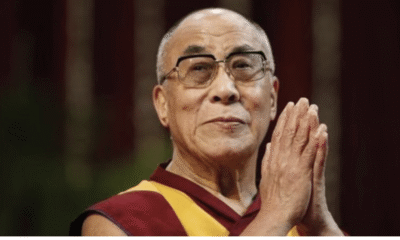
|
Getting your Trinity Audio player ready...
|
(The article was originally published in Indian Express on September 21, 2024 as a part of Dr Madhav’s column titled ‘Ram Rajya’. Views expressed are personal.)
Democratic politics began its journey in Athens as a negative voting system in which eligible voters, mostly landowners, were asked to “elect” citizens to be expelled from the Greek city-state, or punished. Socrates was one of the victims when the citizens voted to award the death penalty to him. Competitive electoral politics took root several centuries later, in Europe of the Enlightenment era. The first major country outside Europe to adopt the representative form of democracy was the USA. Through the 17th to the 20th centuries, continuous reforms helped democracies evolve into better forms of governance. Great Britain became a full representative democracy only in 1928 when women finally secured voting rights. In the US, African Americans secured their voting rights only in 1965 through the promulgation of the Voting Rights Act.
India was a late entrant into this system when it opted for the democratic form of government after Independence. But it set several significant benchmarks for the democratic world. Unlike in the UK and the USA, India adopted universal adult suffrage at the very outset of its democratic journey in 1950. In the last 75 years, it has proved not only to be the largest but also the most progressive and successful democracy. It became the first country to introduce Electronic Voting Machines (EVMs) in 2004, and also the first to introduce the idea of None Of The Above (NOTA). Seamless elections for a billion electors using a million polling stations and involving the services of over a lakh security forces and more than 10 million other officials are Indian electoral realities that have flabbergasted even advanced democracies.
India is embarking on another major electoral reform in the form of One Nation, One Election. The first four elections after Independence, from 1952 to 1967, were held in the same format with both the Lok Sabha and state assemblies going to polls the same day. The first disruption to this practice happened when Jawaharlal Nehru’s government used a lame excuse to dismiss the democratically elected government in Kerala headed by Communist Party leader EMS Namboodiripad in 1959. The EMS government was the first elected government after the formation of the Kerala state in 1956. Indira Gandhi, in collaboration with G B Pant, had engineered this dismissal. Elections were held in 1960 and 1965 for the Kerala Assembly. But the mandate in 1965 was so fragmented that a government couldn’t be formed, and the state was put under President’s Rule. Elections were held again in 1967 along with all other assemblies and Parliament, bringing the system of one election back.
The second major disruption happened in 1969 when a split in the Congress party left the central government led by Indira Gandhi in a minority. Indira survived for a couple of years with outside support from parties like DMK, CPI and CPI (M). But, eventually, in early 1971, Parliament was dissolved and fresh elections were held. The indiscriminate use of Article 356 of the Constitution in later years, leading to the dismissal of elected governments in states by the Centre, became another big reason for the breakdown of this practice. Between 1951 and 2015, the article was invoked 115 times.
The net result was that from “one nation one election” until 1967 we landed up in a situation of “one year many elections”. Much has been written about the benefits of returning to the practice of holding simultaneous elections to state and central legislatures ever since the Narendra Modi government appointed a committee headed by former President Ramnath Kovind to submit a report on the feasibility of the same. The committee held extensive consultations with all stakeholders and submitted its recommendations to the government. The report has secured the cabinet’s approval and will be placed before Parliament for making necessary constitutional amendments.
The Opposition is raising several objections but it should remember that simultaneous polls are not new, but a practice that existed in our country in the first two decades after Independence, when partisan politics disturbed the rhythm of electioneering. It doesn’t hurt regional parties or the federal spirit. It also must be remembered that several regional parties like the Akali Dal, DMK and the Communist parties existed in the first two decades of simultaneous polls.
We must return to the healthy practice for one important reason. Pramod Mahajan, a veteran BJP leader, and a minister in the Atal Bihari Vajpayee government, used to say that elections are fought only in the last three months while governance takes precedence during the remainder of the five-year term. Today, with elections taking place every six months in one or the other part of the country, governance becomes the biggest casualty. Pressure on human and financial resources too is enormous.
The Kovind committee’s recommendations attempted to address these challenges.
There are certain issues on which Parliament needs to hold a healthy debate. One reason why the five-year cycle is disturbed is the lapsing of governments into a minority due to defections. That was addressed through an earlier reform making it difficult for elected members to change parties. Some loopholes still exist but, broadly speaking, it is no longer easy for legislators to change parties. Another destabilising challenge is the business of no-confidence motions. The best way would be to replace it with a provision for only a confidence motion — any party can bring in a motion to prove confidence in another government, but not simply to prove no confidence in one government. That puts extra pressure on parties to find an alternative before destabilising a government.
In any case, returning to simultaneous polls is bound to usher in an era of better governance, which will result in better accountability.




